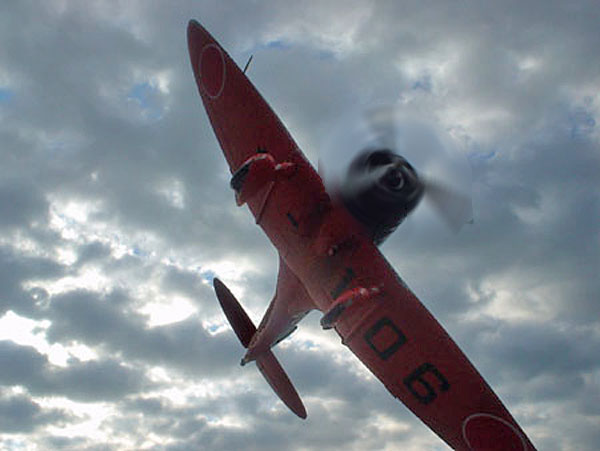|
Classic
Airframes 1/48 scale
Mitsibushi A5M4K "Claude"
by
Waikong Chung
|
 |
|
Mitsibushi A5M4K "Claude" |

HyperScale is proudly supported by Squadron
The Mitsibushi A5M4 was the model immediately preceding that of the
the A6M Zeke series, more popularly know in the west as the "Zero". Used
in combat throught the 1930's in China by the Japanese Navy, they faced
off against Curtiss Hawk II's. The particular version depicted here is
the two seat trainer, A5M4-K, belonging to the Kasumiguara Kokutai in
Omura.

The kit also provides decals for a generic trainer that has an all
orange paint scheme.
This is my first try at a limited run injection kit with lots of
resin details. Hyperscale has a nice write-up of what comes with the box
in its preview of this kit. Classic Airframes also has the single seat
A5m4 fighter version of this plane, these two kits are almost identical
except for the additional resin detail for the backseat the modification
of the airframe.
Cockpit
The first area you will notice is to the resin interior which is
meant to be completed as a single "tub" with sidewalls attached to the
floor. This is then sandwiched by the two airframe sides. However, after
removing copious amounts of plastic from the side walls and large
amounts of resin, I still couldn't make the tub fit properly.

Luckily, I used masking tape to mockup the assembly and tested
fitted. So I resorted to gluing the sidewall details to the airframe
first, test fit and sand the floor multiple times, and then sandwiching
the buildup floor into the airframe. Despite the fit problems, it does
buildup into a nicely detailed cockpit.
Engine and Fuselage
The second area that needs attention is the lack of locating pin or
positioning tabs. Given the general fit problems, the missing locating
pins is probably just as well as you would have to shave them off to get
a good fit anyway. The missing reinforcing tabs for the wings or
stabilizer (instructions shows simple 'butt joints' to the airframe)
would seem to result in a weak joint so I drilled holes and used solid
brass tubes as reinforcements.
 The
same technique was used in the resin tail wheel, where I replaced the
descending support with the same brass tubing. This was a resin part
that was broken out of the box. The picture shows the piece installed
but unpainted. The
same technique was used in the resin tail wheel, where I replaced the
descending support with the same brass tubing. This was a resin part
that was broken out of the box. The picture shows the piece installed
but unpainted.
The next area of attention was a nicely done resin engine that just
needed drybrushing and some rods. I didn't go crazy with it as most of
it is hidden once the cowl is put in-place.
Note that significant thinning of the cowl and reduction in size of
the cylinder heads are also needed to fit the assembly. Everything else
went in fairly smoothly with more test-fitting, putty, and sanding.
The plane was ready for painting. Two schemes were provided, an
overall orange or green/orange. I've proceeded with the more subdue one,
trying out some new techniques in fading the panels. The effect doesn't
really show up well in these photos as I was perhaps too conservative in
applying the 'faded' coat. Applying a future coat before decaling lost
much of the initial faded effect. Next time, I will be a bit braver.
After the decals, which went on wonderfully, a Tamiya thinned "smoke"
wash was used to deepen the panel lines, I finished with some paint
chipping, Not too excessive as this plane would have seen service in the
mid to late 1930's, before Japan's resources were severely put to the
test by the American forces.

The last major hurdle were the windshields. These were my first vacum
form ones and one definitely needs to get accustom to their thin and
flexible nature as compared to injection molded ones. They have to be
cut out from their molded sheet and the 2nd windshield needs a cutout
for the radio. Thankfully, they provided 2 of each as I needed them!
This was quite a challenge to my modeling skills, but definitely
worth the effort to create some of the lesser known planes that the big
manufacturers will not be making anytime soon.
Click the thumbnails below to view larger images:
Model, Images and Text Copyright © 2004
by Waikong Chung
Page Created 23 November, 2004
Last Updated
23 November, 2004
Back to
HyperScale Main Page
|
Home
| What's New |
Features |
Gallery |
Reviews |
Reference |
Forum |
Search